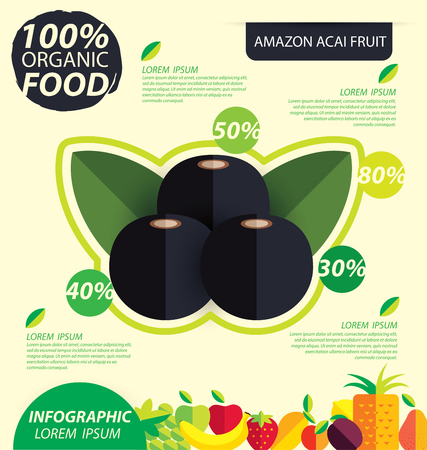Introduction to Biofertilizers in Indian Fruit Gardens
Across the vibrant landscapes of India, fruit gardens burst with the colour and fragrance of mango, guava, pomegranate, and countless other cherished varieties. As more Indian fruit growers turn towards nature-friendly farming, biofertilizers are quietly taking root as a preferred solution. But what exactly are biofertilizers? Simply put, they are living microorganisms—such as bacteria, fungi, or algae—that enrich the soil by increasing its natural fertility. Unlike chemical fertilizers that offer quick but sometimes harsh results, biofertilizers work in harmony with Mother Earth, gently improving soil health and supporting the lush growth of fruit plants. Their growing popularity in India is inspired by both tradition and science: generations-old organic wisdom now meets modern eco-conscious practices. For those passionate about cultivating healthy, tasty fruits while nurturing the land for future harvests, biofertilizers offer a fresh path rooted in sustainability.
Benefits of Using Biofertilizers for Fruit Plants
In the vibrant heart of Indian agriculture, biofertilizers bring a natural harmony to fruit cultivation, blending modern science with our time-honoured wisdom. Let us explore the many advantages that biofertilizers offer to fruit plants, from enriching the soil to producing fruits that delight both palate and tradition.
Enriching Soil Health – The Foundation of Prosperous Orchards
Healthy soil is the soul of any fruitful garden. Biofertilizers infuse the earth with beneficial microorganisms, such as Rhizobium, Azotobacter, and Phosphate Solubilizing Bacteria, which naturally fix nitrogen and unlock vital nutrients. This process mirrors the ancient Indian practice of nurturing soil life through organic matter and crop rotation.
Biofertilizer Benefits for Soil
| Traditional Wisdom | Modern Biofertilizer Action |
|---|---|
| Applying farmyard manure | Nutrient cycling by microbes |
| Cover cropping with pulses | Nitrogen fixation in root zones |
| Mulching for moisture retention | Enhanced microbial activity |
Enhancing Fruit Taste and Quality – Nature’s Sweetness Unlocked
Biofertilizers gently nourish fruit plants, leading to juicier mangoes, sweeter guavas, and more aromatic papayas. By improving nutrient uptake and fostering balanced plant growth, they help fruits develop their full flavour potential—just as generations of Indian growers have valued taste alongside yield.
Increasing Yield – Abundance Rooted in Tradition
The use of biofertilizers results in stronger root systems and better resistance to pests and diseases, naturally increasing harvest quantities season after season. This echoes the age-old Indian belief that healthy land yields abundant crops without harming Mother Earth.
Key Benefits at a Glance
| Benefit | Description |
|---|---|
| Sustainable Productivity | Keeps soil fertile for future generations |
| Cultural Harmony | Supports eco-friendly farming methods known in India for centuries |
| Purer Fruits | No chemical residues; safe for family and community consumption |
| Lively Orchards | Attracts pollinators and beneficial insects, echoing natural gardens of old Bharat |
Together with biofertilizers, Indian fruit growers can cultivate not just plentiful harvests but also a thriving ecosystem—honouring tradition while embracing innovation.

3. Types of Biofertilizers Suitable for Indian Climates
India’s diverse geography and vibrant fruit culture call for biofertilizers that harmonize with both the land and local fruit crops. By choosing the right type, growers nurture their orchards with mindful care, echoing the rhythms of nature.
Rhizobium: The Pulse of Nitrogen Fixation
Widely celebrated in India, Rhizobium biofertilizers are especially cherished for leguminous fruit plants such as guava and ber. These beneficial bacteria form symbiotic relationships with roots, gently weaving nitrogen into the soil tapestry. This natural enrichment boosts plant vitality, helping fruits ripen with a fuller taste and vibrant colours so beloved across Indian markets.
Azotobacter: A Versatile Ally for Fruit Growers
Azotobacter is a free-living bacterium, perfectly suited to India’s varied climates—from the lush Western Ghats to sun-drenched plains. It supports mango, banana, pomegranate, and citrus crops by fixing atmospheric nitrogen around root zones. Its gentle action helps fruit trees grow sturdier, yielding harvests that are both abundant and bursting with native flavours reminiscent of home gardens across the subcontinent.
Mycorrhizae: Nature’s Root Network
Mycorrhizal fungi create intricate underground webs that extend a plant’s reach for nutrients and water—a blessing during India’s dry spells or unpredictable monsoon showers. Especially beneficial for crops like papaya, custard apple, and sapota, mycorrhizae enhance nutrient uptake while nurturing the soil ecosystem. This natural partnership results in fruits that are succulent and deeply infused with the sweetness of Indian terroir.
Tailoring Biofertilizer Choices to Local Needs
The selection of biofertilizer must reflect both regional climate and traditional wisdom. For example, farmers in Maharashtra may favour Azotobacter for their grapes, while orchardists in Tamil Nadu often turn to mycorrhizae for their jackfruit groves. Aligning these choices with indigenous knowledge ensures fruit plants not only thrive but also express their true character—healthy, flavourful, and unmistakably Indian.
A Garden Flourishing in Harmony
Embracing these biofertilizer varieties weaves a living connection between fruit plants and the Indian landscape. By nurturing soil naturally, growers honour both cultural heritage and ecological balance—harvesting fruits that are as wholesome as they are delicious.
4. How to Apply Biofertilizers: Tips for Indian Home Gardeners
Using biofertilizers for your fruit plants is a sustainable and smart way to encourage natural growth, improve soil health, and enjoy tastier harvests. Indian home gardeners can easily incorporate biofertilizers into their routine with a few simple steps. Here’s a step-by-step guide, keeping in mind local gardening traditions and climate conditions.
Step-by-Step Guide to Using Biofertilizers
Step 1: Choose the Right Biofertilizer
Select biofertilizers that suit your fruit plant species and local soil type. Common options include Rhizobium (for legumes), Azotobacter or Azospirillum (for non-legumes), and Phosphate Solubilizing Bacteria (PSB). You can find these at most agricultural stores or through trusted online suppliers in India.
Step 2: Prepare Your Fruit Plants
Before application, lightly loosen the soil around your fruit plants using a small hand hoe or khurpi, commonly found in Indian homes. This allows the biofertilizer microbes to reach root zones efficiently.
Step 3: Application Methods
| Method | Description | Best For |
|---|---|---|
| Seed Treatment | Mix seeds with a biofertilizer slurry before sowing. | Mango, Guava, Citrus seeds |
| Root Dipping | Dip young sapling roots in diluted biofertilizer solution for 20-30 minutes before planting. | Pomegranate, Papaya, Banana saplings |
| Soil Application | Mix recommended dose of biofertilizer with compost or farmyard manure (gobar khad) and spread around base of plants. | Mature trees like Sapota, Jackfruit |
Step 4: Watering After Application
Irrigate gently after applying the biofertilizer. Avoid heavy flooding – just moistening the area is enough to help microbes settle in. Early morning or evening is best to prevent loss due to sunlight and heat.
Step 5: Maintenance & Frequency
Apply biofertilizers once every 3-4 months during the growing season for continuous benefits. Combine this practice with traditional mulching (using neem leaves or dried grass) to retain soil moisture and add extra nutrients.
Quick Tips for Indian Conditions
- Avoid using chemical fungicides or pesticides immediately after applying biofertilizers as they may kill beneficial microbes.
- If you use cow dung (gobar) or compost, mix it well with the biofertilizer before adding to soil for best results.
- Store unused biofertilizer packets in a cool, dry place away from direct sunlight – a common storage tip in many Indian households.
With these steps, Indian home gardeners can nurture healthy fruit plants naturally and reap delicious rewards season after season!
5. Success Stories: Indian Farmers Growing Bumper Fruit Crops
Across India’s diverse landscapes, countless farmers and home gardeners are embracing biofertilizers for their fruit plants, merging the wisdom of tradition with the promise of modern innovation. Their inspiring journeys highlight how biofertilizers can transform orchards and backyards into vibrant, fruitful spaces.
Bumper Mango Harvests in Uttar Pradesh
Take the case of Ramesh Yadav, a mango grower from Malihabad, Uttar Pradesh. For generations, his family relied on conventional chemical fertilizers, but declining yields and poor soil health led him to try organic alternatives. After introducing biofertilizers—especially Rhizobium and phosphate-solubilizing bacteria—he saw remarkable improvements in tree vigor and fruit set. “The taste is sweeter, the size is better, and our orchard feels alive again,” he shares proudly.
Sweet Guavas from Maharashtra’s Gardens
In Maharashtra’s Nashik region, Rekha Pawar manages a small guava plantation. Switching to biofertilizers like Azospirillum and Trichoderma made her plants greener and more resistant to disease. She noticed increased flowering and heavier fruits. “My customers now ask specifically for my guavas at the local mandi,” she says, emphasizing how natural solutions have helped her stand out in a competitive market.
Blending Tradition with New Ideas
Many Indian growers use biofertilizers alongside age-old practices like composting cow dung or using neem cake. This fusion not only respects cultural heritage but also maximizes plant health and flavor. As Suresh Kumar from Tamil Nadu explains, “Biofertilizers work like a magic tonic, but they fit perfectly into our traditional way of caring for the land.”
The Ripple Effect: Inspiring Communities
Success stories travel fast in rural India. Farmer groups across Andhra Pradesh and Punjab are organizing workshops to share their experiences with biofertilizers. These real-life tales inspire neighbors to shift away from chemical-heavy approaches toward a more sustainable path—one that promises healthy soils, tasty fruits, and a garden teeming with life.
6. Common Myths and FAQs About Biofertilizers in India
Dispelling Misconceptions: What Indian Fruit Growers Should Know
Biofertilizers, though gaining popularity in India, are still surrounded by doubts and myths among fruit growers. Let’s address some of the most common questions to help you make an informed choice for your orchard’s health and prosperity.
Myth 1: Biofertilizers Are Slow and Ineffective
Many believe that only chemical fertilizers can give fast results. However, biofertilizers work in harmony with the soil ecosystem. While the initial effects might seem gradual, the long-term benefits include improved soil fertility, sustained plant health, and tastier, more resilient fruits. In India’s diverse climates—from Kerala’s lush monsoons to Maharashtra’s dry spells—biofertilizers adapt and enrich soils naturally.
Myth 2: Biofertilizers Cannot Replace Chemical Fertilizers Completely
It is true that shifting from chemicals to organics requires a transition period. But with regular use of quality biofertilizers, many Indian farmers have successfully reduced or even eliminated chemical inputs. The key lies in consistent application and pairing biofertilizers with compost and traditional practices like mulching or intercropping.
FAQ 1: Are Biofertilizers Safe for All Types of Fruit Plants?
Absolutely! Whether you grow mangoes in Uttar Pradesh, guavas in Bihar, or bananas in Tamil Nadu, biofertilizers suit a wide range of fruit crops. They contain beneficial microbes native to Indian soils, ensuring compatibility with local varieties without harming your plants or the environment.
FAQ 2: How Should Biofertilizers Be Applied?
The method depends on the product type—powdered, liquid, or granular. Typically, they are mixed with water for foliar sprays or added directly to the root zone during planting or irrigation. Always follow package instructions and consult local agriculture extension officers for best results tailored to your region’s conditions.
A Garden Wisdom Tip for Indian Orchards:
Combine biofertilizer use with time-honoured Indian gardening techniques—like using neem cake or cow dung—to create a vibrant ‘phalon ka bagicha’ (fruit garden) bursting with flavourful harvests.
Final Thought
Embracing biofertilizers is not just about following a trend—it’s about nurturing your land according to Indian wisdom while adopting modern science. By clearing these myths and understanding the facts, you empower your fruit plants to yield healthy, tasty produce season after season.


